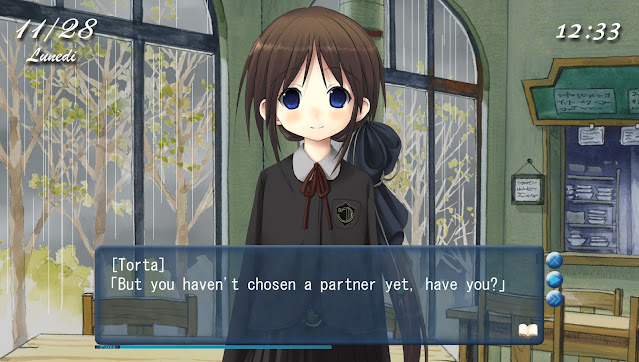Symphonic Rain
Introduction:
Symphonic Rain, known as "Shinfonikku Rein" in Japanese, stands as a Japanese musical visual novel crafted by Kogado Studio. It made its debut as a limited edition on March 26, 2004, exclusively for Windows. This release marked the inception of a series of "music adventure" games by the Kuroneko-san Team within Kogado Studio. The standard edition followed suit on August 27, 2004. The game, suitable for all ages, is centered around themes of romance and relationships. It later saw publication and distribution in regions like Taiwan, Hong Kong, Singapore, and Mainland China by T-Time Technology. In Japan, Symphonic Rain experienced subsequent releases—a collector's edition on June 24, 2005, and a more accessible version on November 22, 2007.
Much like its visual novel counterparts, Symphonic Rain heavily relies on textual storytelling. Player interaction is minimal, primarily involving selecting options that determine post-school destinations. The narrative intermittently transitions to a "song-playing mode," prompting players to synchronize key presses with the rhythm of background music. These melodies are usually sung by heroines within the game, with colored musical notes flowing from right to left across the screen. Each note corresponds to a keyboard letter, requiring players to press the key when the note aligns with a designated region beside the treble clef. Points are allocated based on accuracy, ranging from zero for a miss to thirty-five for a perfect hit. Consistent accuracy results in higher point values and chains. An evaluation meter at the corner of the screen reflects accuracy progress.
Gameplay
Successful attempts illuminate a circular lamp above after accumulating ten points, while incorrect attempts darken the lamp or ring. A minimum of four lit lamps is needed for a "pass," positively influencing the story. An autoplay function exists for players less skilled in the "song-playing mode," although using it results in a zero score.
The game encompasses six favorable endings and three unfavorable ones. The central heroine's story, the Da Capo scenario, must be completed before accessing the Al Fine scenario. Al Fine offers a perspective shift through Tortinita Fine and answers lingering story questions. Chris, the original protagonist, is voiced in this scenario, distinct from Tortinita. The terms "da capo" and "al fine" are music-related names for story sections, reflecting the game's structure, which involves repeating the story thrice before concluding with Al Fine's part. After exploring Al Fine's endings, Phorni's scenario becomes available, serving as the game's "true end." This scenario unravels the truth about Phorni and ties up loose ends.
The setting of Symphonic Rain is the fictional Italian-inspired city of Piova, experiencing daily rainfall. Locals embrace the rain, continuing life without umbrellas or raincoats. The narrative follows seventeen-year-old Chris, a student at Piova Communal School of Music. Separated from childhood sweetheart Arietta, Chris keeps their connection alive through weekly letters, symbolizing his promise to return when his drawer is full. The story commences during Chris's third year as a student, preceding a pivotal stage performance exam that requires him to find a vocalist partner.
Final Words
Kuroneko-san Team, a segment of Kogado Studio, spearheaded Symphonic Rain's production. It represents the third entry in their "music adventure" game series, with art direction and character design by Shiro and background art by Kazuo Ebisawa. Maoto Nishikawa, credited as Q'tron, penned the game's scenario. Ritsuko Okazaki, collaborating with King Records, composed the game's music through Copyrights Bank. Tragically, Okazaki passed away in May 2004 after this project, marking her final involvement in a visual novel.
Symphonic Rain premiered as a limited edition for Windows on March 26, 2004, accompanied by a figurine of Phorni. The standard edition launched on August 27, 2004. International releases occurred in Taiwan and Hong Kong on November 11, 2004, and in China on May 25, 2005. A collector's edition debuted in Japan on June 24, 2005, followed by releases in Taiwan and Hong Kong on December 22, 2005. An HD version of the game with multilingual support arrived on June 14, 2017.


0 Comments